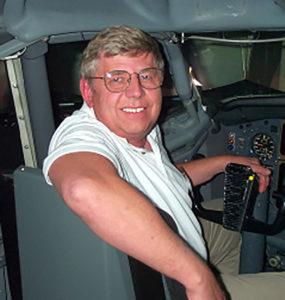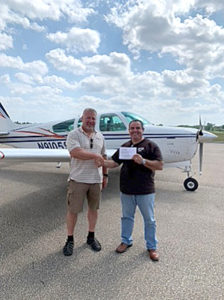Where is the Magenta Line?
by Capt. Michael J. “Mick” Kaufman

I have authored numerous articles about the magenta line, including: “Are you a Child of the Magenta Line” or ” “Are you a pilot or an appliance operator?”
As an instructor who specializes in instrument training over the past 50 plus years, I find that today’s pilots cannot navigate without that magenta line.
In training new instrument pilots, I begin with an evaluation flight to determine what the pilot knows. In addition, I check to make sure his or her avionics are properly installed and set up correctly.
When flying, I first ask him or her to intercept a VOR radial and track it outbound, “Uhhh….how do I do that?”
Pilots need to know where they are at all times: this is basic orientation. However, with no magenta line to follow, many pilots are lost.
When using a GPS and selecting vectors to final there is no magenta line to follow, and it may not even be depicted on the MFD, if it is off the scale. In this case the pilot follows the verbal commands of the air traffic controller until established inbound.
Pilots must understand their position in three dimensions relative to their surroundings, as there will not always be a magenta line to follow.
When training pilots full-time, I would do a full instrument rating that was a month long, with some finish-ups and recurrent training, as needed. However, I have reduced that to just two or three days – and only during the summer months in Wisconsin.
I am still using the same syllabus I used 30 years ago with some modifications to teach the advanced boxes in the instrument panel, as well as a course on “buttonology.”
Buttonology is the art of pushing the right button at the right time –or going “click-click, click-click” and becoming a pilot rather than an appliance operator.
With all our modern technology, coupled with researching accident report data, I think the jury is still out on whether flying is actually safer with this modern technology, or we have safer skies today than they were several decades ago.

There has not been a recent study done by the National Transportation Safety Board [NTSB] to give us the direction in that regard. The last study with which I am familiar indicated that additional pilot instruction is necessary for our technologically advanced aircraft (TAA).
One of my favorite videos on YouTube is called “Children of the Magenta Line.” It points to the fact that a pilot needs to be flying the airplane – and knowing when he or she can do a better job than all the technology in the airplane.
I just finished training a new instrument pilot congratulations to Cesar Dominguez of Yuma Arizona, who can hand-fly an instrument approach equal to or better than most autopilots.
During the instrument flight test Cesar disconnected the autopilot during a VOR approach as the autopilot had difficulty maintaining directional control because of the signal sensitivity near the station.
It is a great accomplishment to receive an instrument rating. It is especially great to be able to hand-fly an airplane better than the autopilot – and to have a good understanding of the advanced equipment in the airplane.
Even many seasoned pilots have become “Children of the Magenta Line”: They have forgotten what it is like to fly a VOR or NDB approach.
I occasionally fly a VOR and NDB approach if I can find one, especially an NDB. It is good to remember what it was like to fly without a Magenta Line.
‘Til next issue of the “Captains Corner,” fly Safe!
Mick



